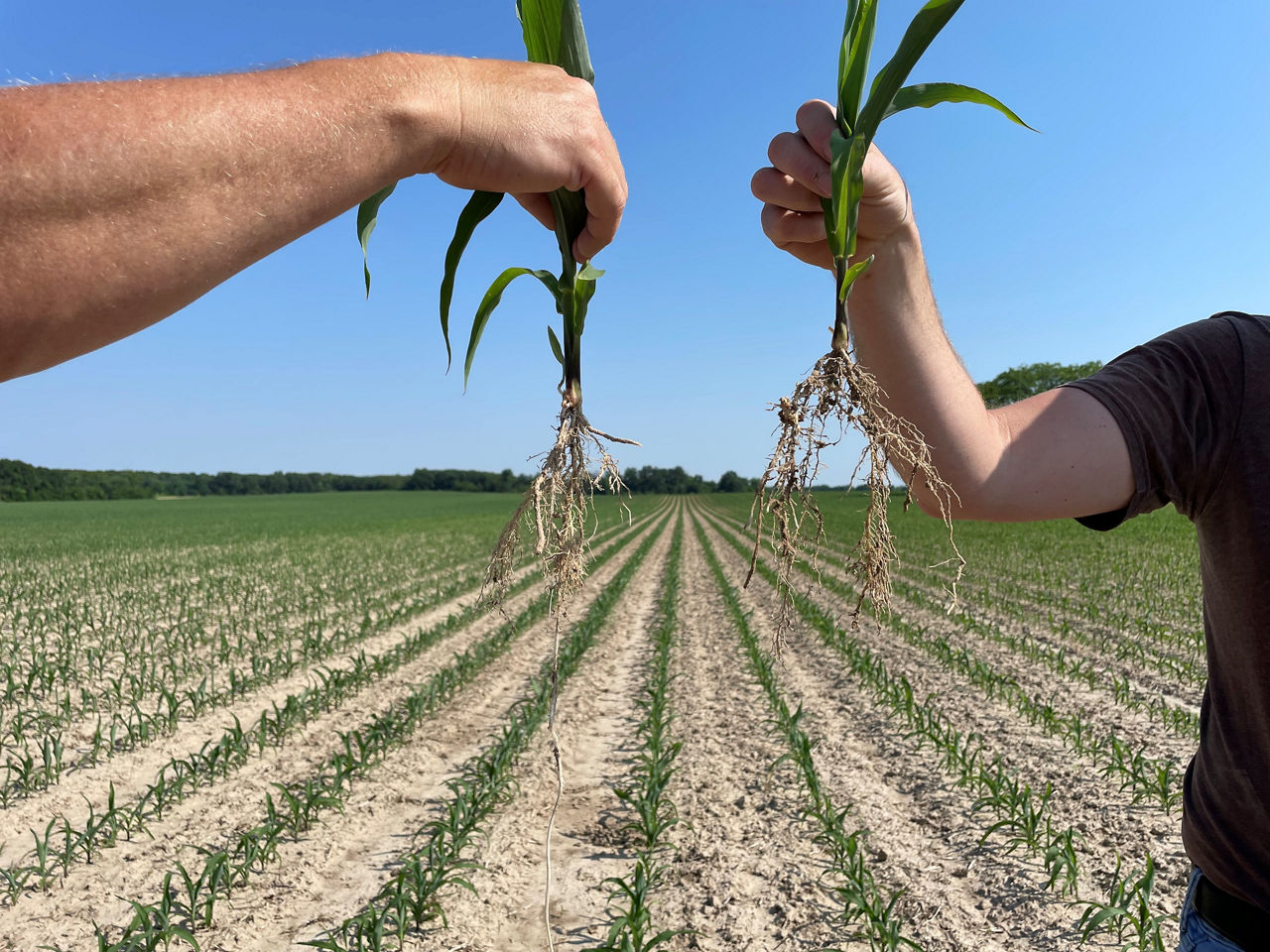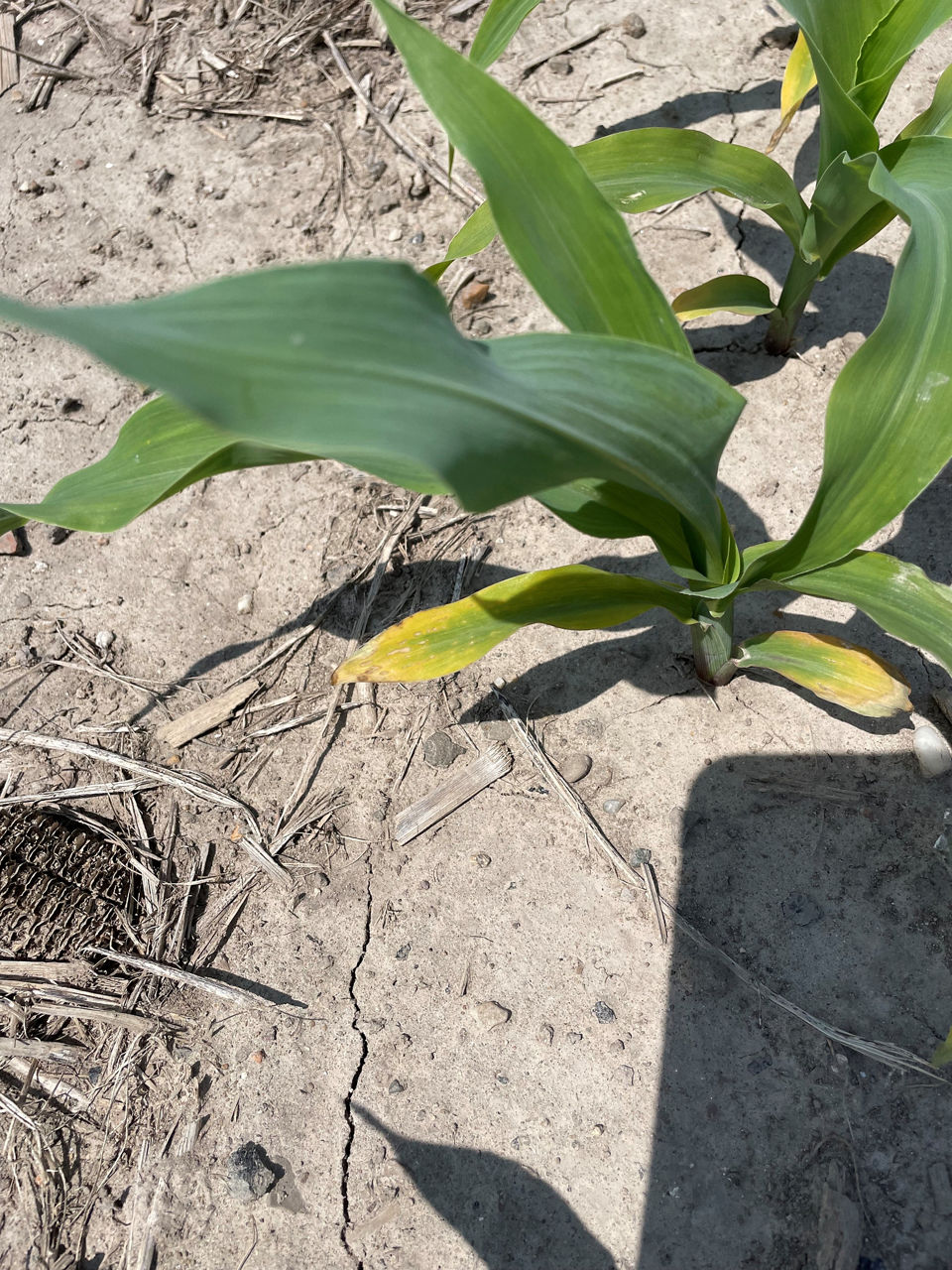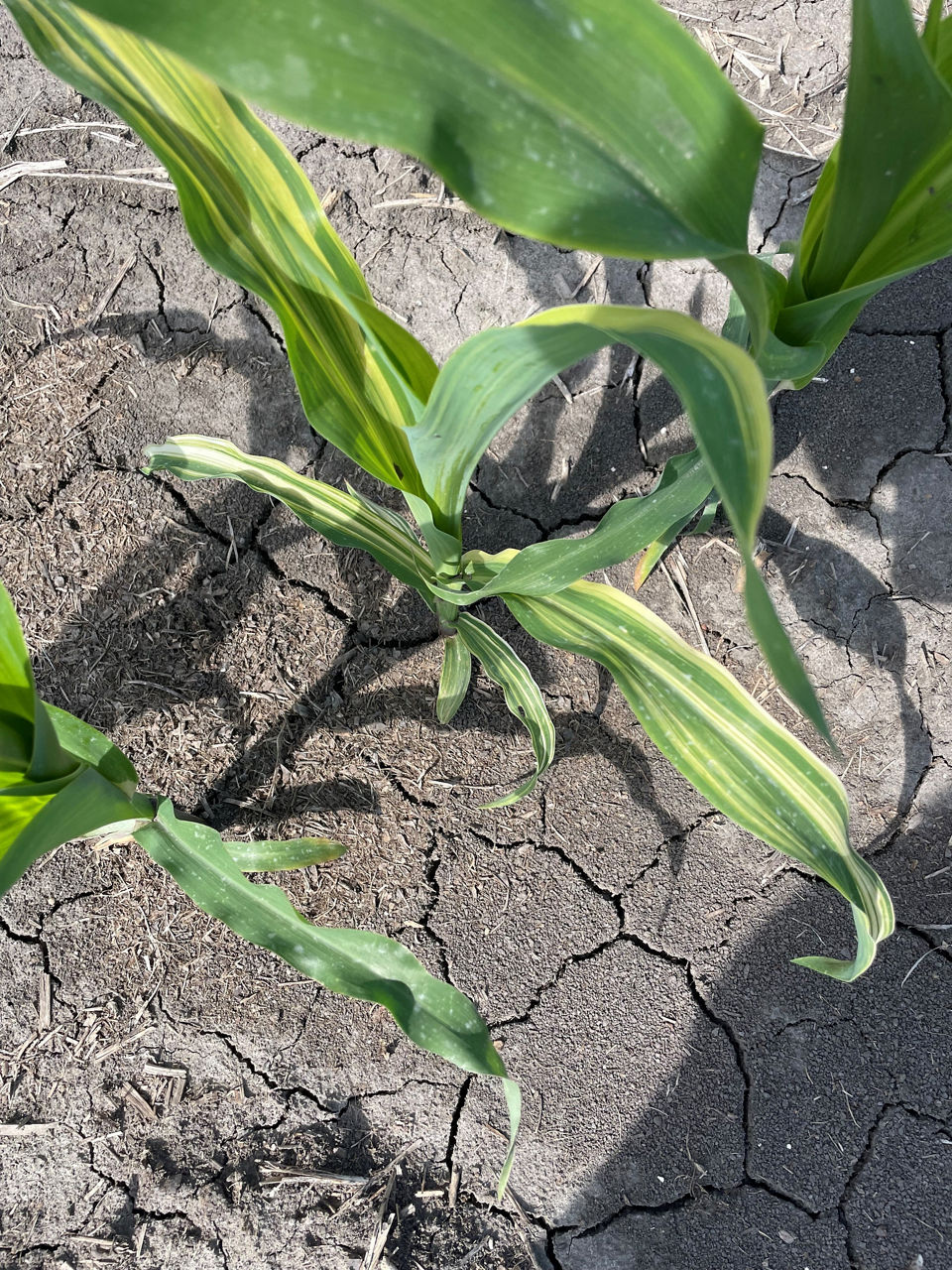Corn is yellow, what could be the cause(s)?
May 17, 2024
Across the countryside, it is easy to pick out a corn field that is pale green or yellow among those that are lush and dark green. There are many reasons why corn plants may appear pale or yellow.
First, current growing conditions and in the weeks prior should be considered. Has it been hot and dry or cool and wet? These conditions can affect root and plant development in a couple of different ways. When soil is oversaturated, the plants can appear pale greenish yellow because the plants are unable to absorb the oxygen needed to properly develop its root system and leaf area. This leads to a lack of photosynthetic activity, which in turn causes the lack of green color.
Another thought to consider is what were the conditions at the time of planting? If the ground was a little too wet, compaction could be an issue (Figure 1). When this occurs, the ground is like a wall, and the roots are unable to branch out. This prevents the corn from reaching the water and nutrients that it needs in the early stages of growth. In addition to being pale yellow, the roots appear flat compared to a plant that was planted in more ideal conditions.

If soil is dry, key nutrients can become immobilized in the soil. Nutrient deficiencies can look similar, but there are key differences. Nitrogen (N) is the first macro nutrient to consider. Early season N deficiency appears as yellowish to light green plants with a later developing yellowish “V” shaped stripe down the midrib of the corn leaf (Figure 2). Potassium has a similar color; however, the key difference is the placement of the discoloration which is on the leaf margins (Figure 3). A deficiency in sulfur can also cause plants to be yellow (Figure 4). In recent years, sulfur in the air has decreased because of environmentally favorable industrial practices. Sulfur deficiency can be visualized by yellow striping on the corn leaves. It is commonly seen in the vegetative stage of the plant. If you are unsure, a tissue test is a great resource to use to confirm your findings.



There could be multiple reasons why a corn plant is yellow. The key questions to ask are:
- What were the soil conditions like at the time of planting?
- What were the enviornemntal conditions prior to and during the time of yellowing?
- Could there be a nutrient deficiency and where are the symptoms located at on the vegeative tissue?
Recall that until the three leaf stage, seedling growth is dependent primarily on the energy and nutritional reserves of the kernel. As the seedling transistions from the kernel reserves to the nodel roots, the plants can appear yellow and in some cases, appear to have poor vigor. Seedling appearance should begin to improve by the four- to five-leaf stage when nodal roots begin absorb soil nutrients. In other words, this is a temporary situation, unlike the other conditions mentioned above.
Lindsey McKinzie
Channel Agronomist
1110_377851
Seed Brands & Traits
Crop Protection
Disclaimer
Always read and follow pesticide label directions, insect resistance management requirements (where applicable), and grain marketing and all other stewardship practices.
©2024 Bayer Group. All rights reserved.